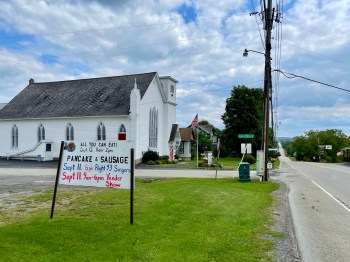What makes economic mobility possible
Kathlene Somerset-Fields has something she whispers to herself when her hands start to sweat and the doubts crowd in.
I’ll be fine. I’ll be fine. I’ll be fine.
She picked up the habit almost a decade ago, in a GED class. When she was worried about a new challenge, she says her teacher would tell her the same thing: “Go ahead Kathlene, you’ll be fine. You’ll be fine!”
“Every time, she’s been fine,” says Diane Brogan-Adams, remembering those days back in the GED class she taught.
When student and teacher first met, Somerset-Fields was a struggling young mother, whose own mother was battling drug addiction.
“You get people that look at you and think, ‘She’s only 16 with two kids? Oh my god. She’s a trouble maker,’” Somerset-Fields says. But “Miss Diane,” as she called her teacher at the time, was different.
“She was welcoming.”
Miss Diane remembers their first meeting well.
“Kathlene pulled up in a station wagon with wood trim and came in with these two children, very confident, I remember later after she filled out paper work and I saw how old she was, I was kind of surprised.”
Brogan-Adams took a special interest in her student. Somerset-Fields remembers that whenever she missed class, her teacher would call to find out what was going on, and when she was coming back.
Eventually, Somerset-Fields did come back and graduated. Then they lost touch, until several years later, when Somerset-Fields walked out of a parenting class she was taking at a community center. Her old teacher was now working at that center. They saw each other in the parking lot.
“Seriously I think god had me walking across that parking lot because he knew I needed guidance at that time,” Somerset-Fields says of that reunion with her teacher. “Honestly she has been my guidance.”
By that point, Somerset-Fields had worked a series of low-paying jobs: nursing aid, quality control at a bacon factory. Eventually Brogan-Adams offered her old student a job at the community center. Today, Somerset-Fields is the Assistant Manager of a youth program there.
“Kathlene is like one of my children,” Brogan-Adams says of her former student. “She just adds a lot to my life.”
The networks of support and community that Somerset-Fields found when she met “Miss Diane” teacher long ago at that GED class, and that she passes on now to a new generation of kids at the youth program — they are key parts of what economists call social capital. And research shows that places high in social capital have better rates of upward mobility for kids born in to poverty.
Correction: an earlier version of this story misspelled Kathlene Somerset-Fields’ name. The text has been corrected.
There’s a lot happening in the world. Through it all, Marketplace is here for you.
You rely on Marketplace to break down the world’s events and tell you how it affects you in a fact-based, approachable way. We rely on your financial support to keep making that possible.
Your donation today powers the independent journalism that you rely on. For just $5/month, you can help sustain Marketplace so we can keep reporting on the things that matter to you.


















